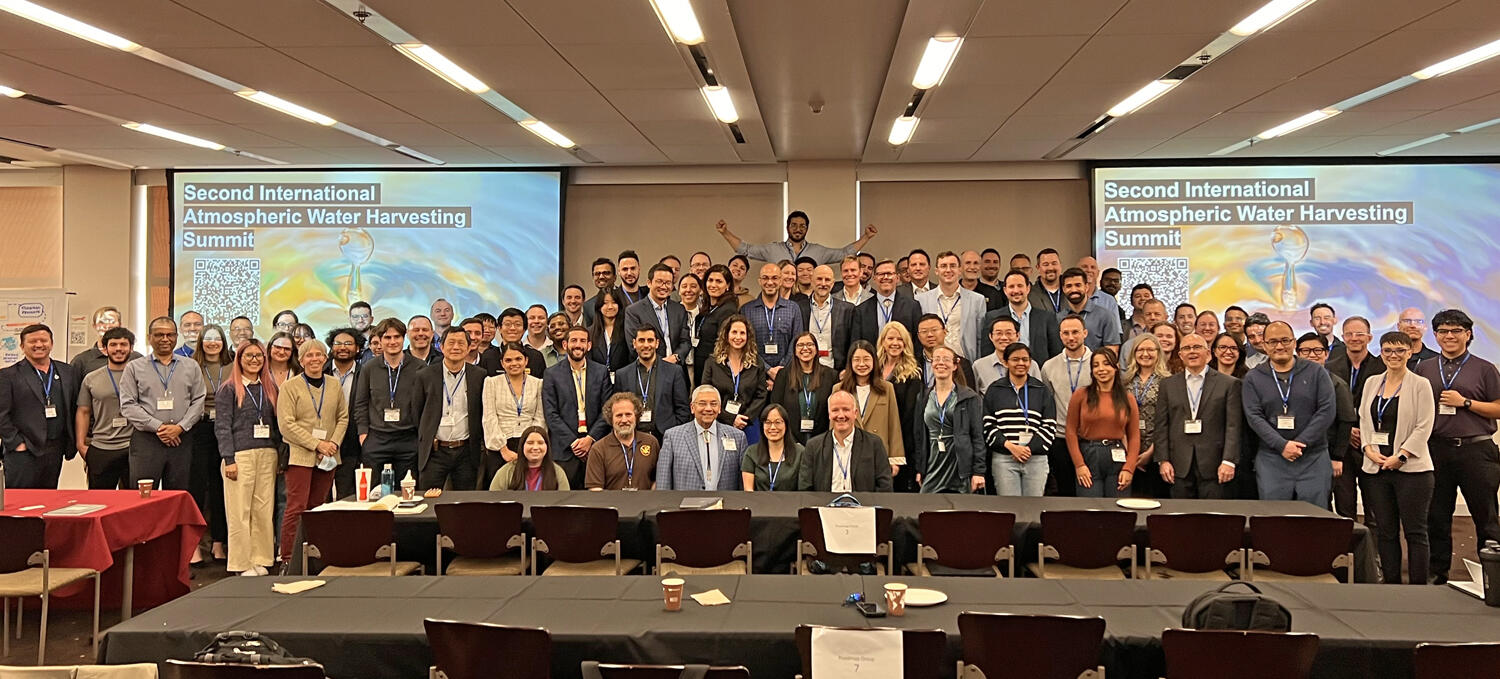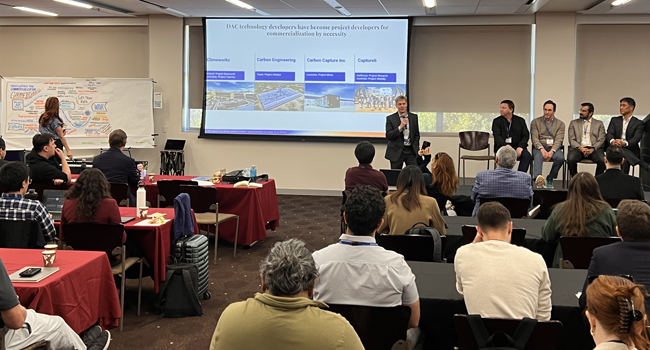
The future of Atmospheric Water Harvesting
In the face of global water scarcity, innovative solutions are more crucial than ever. One such solution that is gaining traction is Atmospheric Water Harvesting (AWH). This emerging technology, which extracts water from the air, has the potential to provide water for a wide range of applications, ranging from agricultural irrigation to cooling data centers that rely on pure water.
To advance work in the field, ASU hosted the second Atmospheric Water Harvesting Summit in February. The summit was organized by the Southwest Sustainability Innovation Engine and the Global Center for Water Technology (GCWT), a pillar of the Arizona Water Innovation Initiative.
Paul Westerhoff, Regents Professor in the School of Sustainable Engineering and the Built Environment at ASU, the Fulton Chair of Environmental Engineering and director of the GCWT, moderated the event.
Over 150 participants from diverse sectors including academia, tech startups, government agencies and non-governmental organizations gathered to contribute to the development of a 20-year AWH roadmap. The event was a follow-up to the inaugural summit in 2024.
“The 2024 summit posed fundamental questions, such as the significance of terminology. Ultimately, we embraced ‘Atmospheric Water Harvesting.’ We also recognized the existence of a strong and growing AWH community,” says Westerhoff. “To maintain momentum, we established the International Atmospheric Water Harvesting Association in the summer of 2024 and hosted global webinars in Asia, the UK, the Middle East and Africa, engaging over 11,000 participants.”
This year's summit built on that foundation, asking critical questions about how much water can be realistically harvested from the atmosphere, the energy footprint of the technology and the long-term impacts on water quality, as well as who benefits from the technology.
Westerhoff says that what made this summit particularly special was the diversity of voices at the table. Approximately half of the attendees came from academia, with over 22 startup companies representing a significant portion of the group. There was also a strong presence from the Salt River Project and Arizona Public Service. This diversity fostered dynamic discussions and generated exciting ideas for future collaborations.

Expert panels delved into various aspects of AWH, from business and law to atmospheric sciences. One of the most engaging sessions was the active research and development mapping workshop, where participants broke into groups to identify both short- and long-term research priorities for different AWH applications.
“We weren’t sure how we would surpass the success of the last summit, but based on feedback, we did,” says Westerhoff.
A multitude of applications and rapid industry growth
Ultra-pure water applications are particularly promising for AWH, with potential uses in data centers, biomedical applications and agriculture. For inland communities that struggle with access to fresh water, AWH could serve as an alternative to traditional solutions like ocean desalination or long-distance water pipelines. As the technology matures and becomes more cost-effective, it could change the landscape of water access worldwide, particularly in arid and semi-arid regions.
However, there are challenges facing the widespread adoption and scaling of AWH technology. For example, one of the primary concerns is the energy consumption associated with harvesting water from the air. While energy-efficient solutions are being developed, AWH systems can still require a substantial amount of electricity to condense water vapor from the atmosphere.
Additionally, while AWH has shown great promise in small-scale applications, scaling these systems to meet the water demands of larger communities or industries presents both technical and logistical challenges.
Despite the challenges, In just one year, the AWH industry has seen rapid growth. Over 25 startups have secured more than $500 million in funding, and at least six new companies have been established in the past year alone. One startup launched on NASDAQ, marking a significant milestone for the industry.
The US currently leads in technology development, with over 30 startups securing more than $500 million in venture capital. The market for AWH is valued at approximately $800 million annually, with an expected growth rate of 8-12% per year.
Looking ahead
In the coming weeks, the summit organizers will integrate feedback into a white paper and journal publication that will serve as the foundation for this 20-year roadmap that Westerhoff says is crucial for the growing AWH community.
Tsunami Products, a sponsor of the event, expressed their enthusiasm for the summit and the opportunity to contribute to the ongoing conversation around water sustainability.
“It was Tsunami’s great pleasure to help sponsor and attend the 2nd Annual Atmospheric Water Harvesting Summit,” the company shared. “During the two-day summit, there were plentiful opportunities to hear about some truly amazing technology from presenters and panelists, connect with other companies and manufacturers in the industry and collaborate as a whole to brainstorm and discuss the future of potable water as we know it.”
The summit was not just about big ideas—it was about turning those ideas into reality, Westerhoff noted. As the summit concluded, participants were already looking forward to the future. Plans are underway for the third International Atmospheric Water Harvesting Summit, tentatively scheduled for early 2026, with a possible move from Phoenix to Las Vegas.
Related stories: